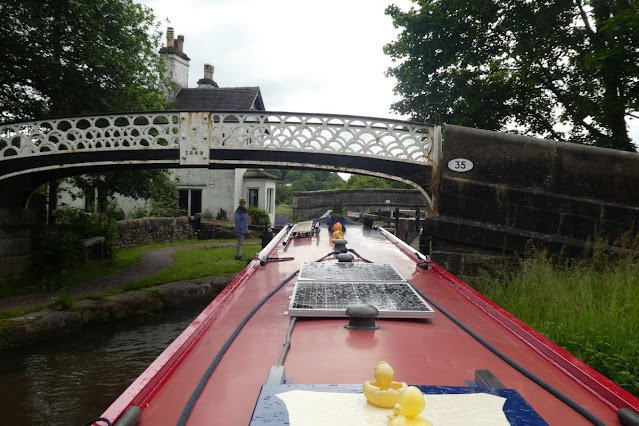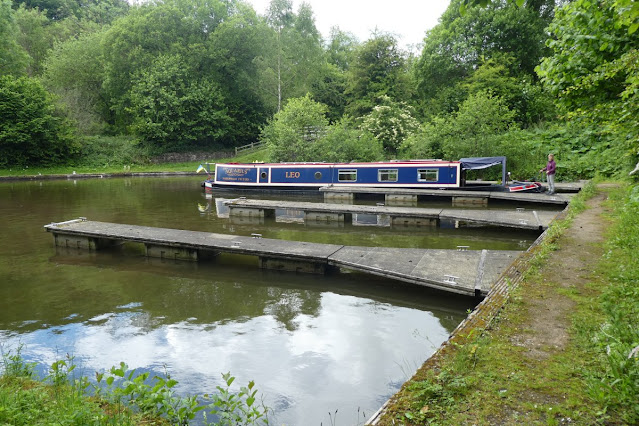We've now explored as much of the Caldon Canal as a narrowboat can. People often ask us which is our favourite canal? Well the Caldon Canal must certainly be in the top three. It has so much variety - a staircase lock, two tunnels (one barely navigable), an intriguing junction, beautiful contryside and places of interest nearby. It is however quite a challenging canal and should not be cruised if you are expecting an easy time. It is often narrow and shallow and the offside is badly overgrown (or at least that has been so in 2022). So here are some photos of its key features with information added.
 |
| Bedford Street is a staircase of two locks which rises nearly 20 feet. |
 |
| Once up the staircse the canal continues on the edge of Stoke. Two bottle kilns have been left in a modern housing development, so you know you are in the Potteries. |
 |
| Endon Bank also had a Jubilee decorated phone box! |
 |
| We took the Leek branch first and near the end of this branch is a short tunnel. |
 |
| This view looking back shows a very tight turn coming out of the very narrow bridge on our return along the Leek branch. |
 |
| We moored on Tuesday evening on the Leek branch close to the Hazelhurst Junction. It was a lovely spot with a fine view opposite. |
 |
| Wednesday saw us turning sharply right at Hazelhurst junction to drop down the 3 locks on our way to Froghall. Here we are going into the top lock. |
 |
| And underneath the Leek branch on an aqueduct built by John Rennie in 1841. |
 |
| We soon passed the Flint Mill at Cheddleton. Here flints were baked in a furnace and then ground by a water mill to a powder used in the pottery industry. |
 | ||
| This bridge is called Cherry Eye Bridge. Its arch has a rather novel shape. The name comes from the ironstone miners here who used to rub their eyes with red stained hands giving them cherry eyes. |












No comments:
Post a Comment
If you ask a question in a comment it may be worth knowing that for some reason at present I am unable to reply to a comment unless you choose to let me have your e mail address.